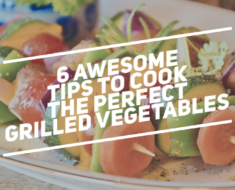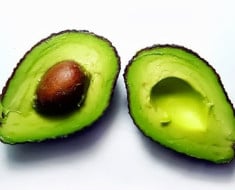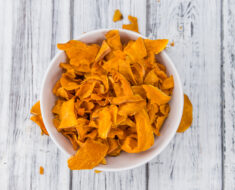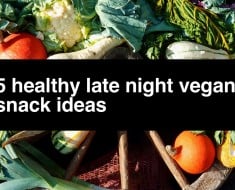Going vegan doesn’t have to be difficult when there are vegan substitute ingredients. Substituting meat, eggs, milk, and cheese with plant-based (vegan) alternatives can make your transition a bit smoother, keeping your taste buds happy. Today I will share with you the foods I use to substitute for my (once) favorite animal-based favorites. As I’ve grown in my vegan ways, I find it unnecessary to imitate meat and cheese as often. But they still find their way onto my plate from time to time. Let’s look at some Vegan substitute ingredients.
Eggs

You can buy a vegan egg substitute such as The Vegg – Vegan Egg Yolk and Energ-E Egg Replacer, or you may wish to create your own mock eggs. Below are several ways to create your own.
For Baking (replaces one egg)
Choose one of the following options:
- 2 Tbsp. potato starch
- 1/4 cup mashed potatoes
- 1/4 cup canned pumpkin or squash
- 1/4 cup puréed prunes
- 2 Tbsp. water + 1 Tbsp. oil + 2 tsp. baking powder
- 1 Tbsp. ground flax seed simmered in 3 Tbsp. water
- 1 Tbsp. plain agar powder dissolved in 1 Tbsp. water, whipped, chilled, and whipped again
Note: Add 2-3 Tbsp. of whole-wheat flour to create an egg replacer that binds.
Breakfast Scramble
1. Take 1 box of firm tofu and drain the liquid.
2. Pat the block with paper towels until most of the moisture has been removed.
3. Place block into a large bowl and press (stir) with a fork, breaking the tofu up into an egg-like texture.
4. Add your favorite veggies and fry in a pan until everything is well-cooked.
For my vegan egg(less) salad recipe, click here.
Meat

There are many imitation meats out there, including Tofurkey, Field Roast Grain Meat, and Boca Burgers. But I recommend creating your own, which will be lower in sodium, fat, and cholesterol. Let’s take a look at the options.
Tofu
Tofu, also called “bean curd”, is a food made by coagulating soy milk and then pressing the resulting curds into soft white blocks. It is a component in many East Asian and Southeast Asian cuisines. There are many different varieties of tofu, including fresh tofu and tofu that has been processed in some way. Tofu has a subtle flavor and can be used in savory and sweet dishes. It is often seasoned or marinated, taking on the flavors of said seasoning. Read More
Tofu (typically) comes in 3 different varieties: Soft/Silken, Firm, and Extra Firm. The variety you choose depends on the dish you are preparing. Silken tofu is usually best for smoothies and desserts, where Firm is better at imitating meat and eggs.
protein = 10g per 1/2 cup
For my tofu sandwich recipe, click here.
Tempeh
Tempeh (témpé) is a traditional soy product that is originally from Indonesia. It is made by a natural culturing and controlled fermentation process that binds soybeans into a cake form, similar to a very firm vegetarian burger patty. It originated in today’s Indonesia, and is especially popular on the island of Java, where it is a staple source of protein. Like tofu, tempeh is made from soybeans, but it is a whole soybean product with different nutritional characteristics and textural qualities. Tempeh’s fermentation process and its retention of the whole bean give it a higher content of protein, dietary fiber, and vitamins. It has a firm texture and an earthy flavor which becomes more pronounced as it ages. Because of its nutritional value, tempeh is used worldwide in vegetarian and vegan cuisines, where it is used as a meat analogue. Read More
Tempeh can be fried, baked, or even boiled. It can be served alone or with vegetables, on top of salads or in a sandwich. I like to lightly fry mine in coconut oil and BBQ sauce and place it between two whole wheat buns to make a tasty (and healthy) BBQ sandwich.
protein = 15g per 1/2 cup
Seitan
Wheat gluten, also called seitan, wheat meat, mock duck, gluten meat, or simply gluten, is a food made from gluten, the main protein of wheat. It is made by washing wheat flour dough with water until all the starch dissolves, leaving insoluble gluten as an elastic mass which is then cooked before being eaten.
Wheat gluten is an alternative to soybean-based meat substitutes such as tofu. Some types of wheat gluten have a chewy or stringy texture that resembles meat more than other substitutes. Wheat gluten is often used instead of meat in Asian, vegetarian, Buddhist, and macrobiotic cuisines. Simulated duck is a common use for wheat gluten. Read More
protein = 75g per 100 grams
Cheese

- ½ cup + 2 tablespoons raw cashews
- ¼ cup nutritional yeast
- 1 teaspoon onion powder
- 1 teaspoon sea salt
- ½ teaspoon garlic powder
- 1+3/4 cups plain unsweetened soy milk
- ½ cup agar flakes (or 8 teaspoons agar powder)
- ¼ cup canola oil
- 2 tbsp yellow or white miso
- 1 tablespoon fresh lemon juice
- 3 teaspoons white truffle oil (optional)
- Chopped chives (optional)
For directions, click here.
Easy Vegan Cashew Cheese – by Brandi
Ingredients:
- 1 cup raw organic cashews
- 4 cups hot water
- 1 lemon, juiced and zested
- 1/2 teaspoon salt
- 2 tablespoons nutritional yeast
For directions, click here.
Milk
Almond milk
Ingredients:
- 1 cup Almonds
- 2 cups Water, more for soaking
- (optional) Sweetener such as Agave Nectar, Maple Syrup, Stevia, or Raw Sugar
Soy Milk
Soy milk is made from soybeans. A traditional staple of Asian cuisine, it is a stable emulsion of oil, water, and protein. It is produced by soaking dry soybeans and grinding them with water. Soy milk contains about the same proportion of protein as cow’s milk: around 3.5%; also 2% fat, and 2.9% carbohydrate. Soy milk can be made at home with traditional kitchen tools or with a soy milk machine. Read More
Make your own soy milk easily with this simple recipe:
ingredients:
- 1 cup organic yellow soybeans
- 1/4 tsp salt
- 2 Tbsp sugar or agave nectar
- 1/2 tsp vanilla (optional)
For directions, click here.
Coconut Milk
Loaded with phosphorus, magnesium, lauric acid, selenium, and manganese, coconut milk can contribute to calmer nerves, stronger bones, regulated blood sugar, and decreased joint inflammation. It’s no wonder that even carnivores are switching to coconut milk when looking for vegan substitute ingredients.
There are several companies that sell coconut milk: Thai Kitchen Organic, So Delicous, and Native Forest are a few.
You can also make your own coconut milk at home if you have the resources. You will need access to fresh coconuts and a blender.
directions:
1. Crack open a young coconut and pour water into blender.
2. Scoop out the flesh and also place into the blender.
3. Blend until smooth.
I hope that this article assists you in transitioning to a vegan diet with ease and switching to vegan substitute ingredients. The hardest part of changing your eating habits is finding alternatives to your favorite foods. If you have any questions, please feel free to leave a comment and I will get back to you as soon as possible.
Do you have any recipes that you would like to add? Please feel free to leave a link or comment below!
Photos Courtesy:
http://viry.deviantart.com
http://zoewiezo.deviantart.com
http://galaxialuna.deviantart.com
silverpassion.deviantart.com
http://cfcoughlin.deviantart.com







